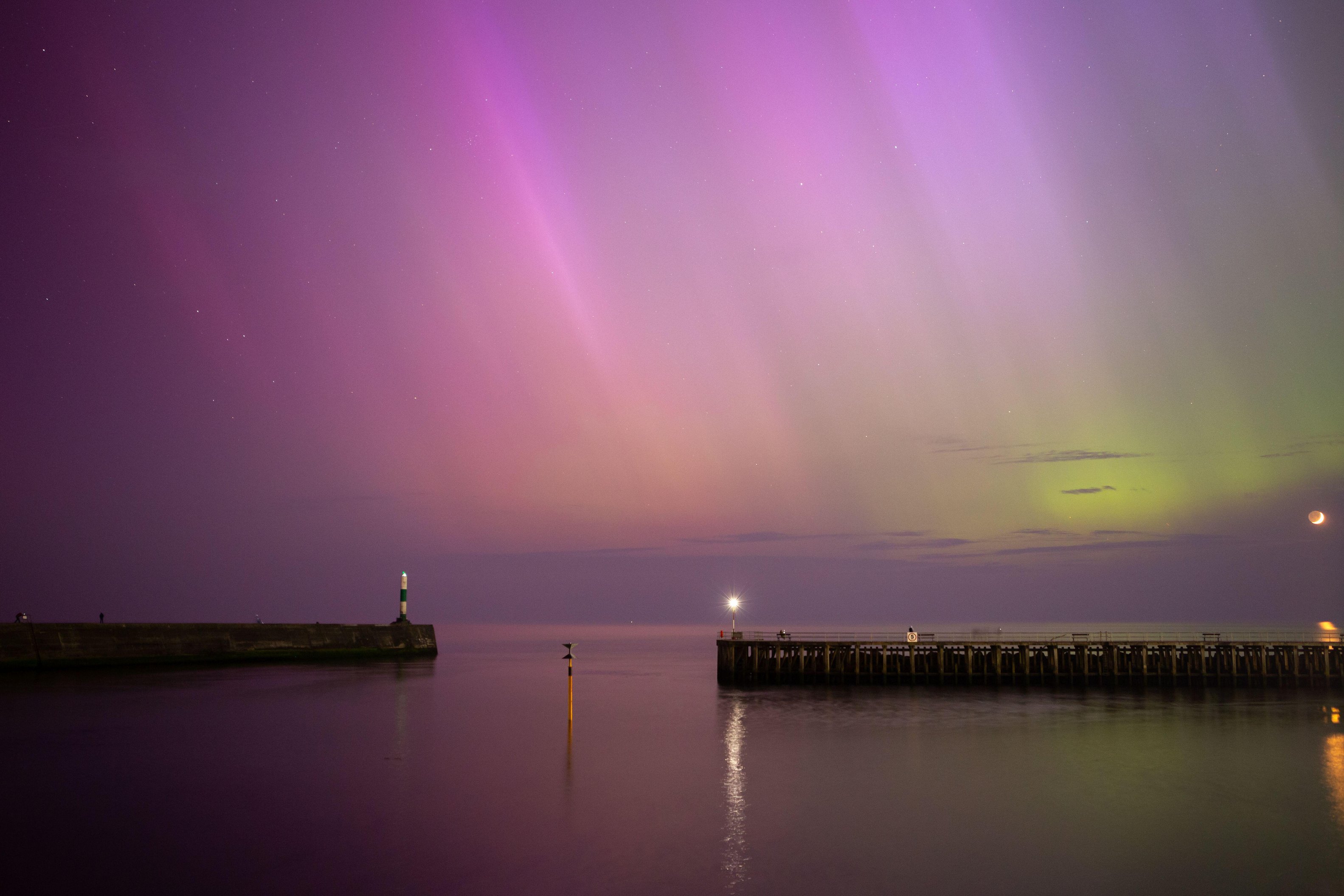The lights, also known as aurora borealis, has been spotted in Whitley Bay on the north east coast, Essex, Cambridgeshire and Wokingham in Berkshire.
Kathleen Cunnea, in Great Horkesley, Essex, said: “It was absolutely stunning to see.”
Met Office spokesman Stephen Dixon said on Friday there was a good chance for the Northern Lights to be seen.
He said: “Although the shorter nights will limit the visibility window, there’s a good chance to see the aurora, particularly on Friday night and especially in Scotland, Ireland and parts of northern England and Wales.
“There could even be visibility further south if you have the right equipment.
“Those conditions could continue on Saturday night but we still have to work out some details on where exactly that will be.”
Mr Dixon said the combination of clear skies and enhanced activity from the sun reaching Earth would improve the chances of seeing the display.
Aurora displays occur when charged particles collide with gases in the Earth’s atmosphere around the magnetic poles.
In the northern hemisphere, most of this activity takes place within a band known as the aurora oval, covering latitudes between 60 and 75 degrees.
When activity is strong, this expands to cover a greater area – which explains why displays can be occasionally seen as far south as the UK.







